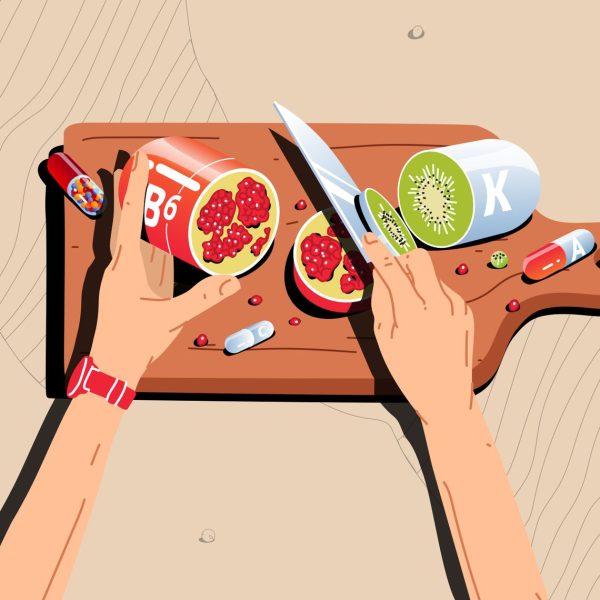|
Over 20,000 customers have reduced their symptoms and improved their health by consulting Shyft's Clinical Nutritionists. When are you starting?
Click here to begin


Looking for lifestyle management and tracking for specific health conditions? Go to Shyft

Share this article
|
Over 20,000 customers have reduced their symptoms and improved their health by consulting Shyft's Clinical Nutritionists. When are you starting?
Click here to begin
Continue to read on a range of topics related to Exercise, Nutrition, Mental Health and Sleep Health.

3 minutes
11 Apr 2023
Are you still confused and find yourself wondering whether you should or should not go for that favourite recipe of yours since your doctor said the word “hypothyroidism” the last time you visited? Don’t worry! We’ve got your back on this. In this article, we will discuss what you should eat and what you should avoid in case you suffer from “hypothyroidism”. Did I hear the word “thyroid”? Well, the thyroid gland is a bilobed endocrine gland which is also… Read more

Are you still confused and find yourself wondering whether you should or should not go for that favourite recipe of yours since your doctor said the word “hypothyroidism” the last time you visited? Don’t worry! We’ve got your back on this. In this article, we will discuss what you should eat and what you should avoid in case you suffer from “hypothyroidism”. Did I hear the word “thyroid”? Well, the thyroid gland is a bilobed endocrine gland which is also…
3 minutes
|
11 Apr 2023

4 minutes
27 Apr 2023
As the world moves to quick commerce and quick answers, it’s not uncommon to look for quick solutions to solve nutritional deficiencies. The popularity of multivitamin tablets points to the same. Between 2000 and 2017, retail sales of nutritional vitamins have more than doubled from $17 billion to over $36 billion. 52% of Americans state now that they take a form of dietary supplement, with over 65% of the UK public saying the same thing. The first one-a-day multivitamin appeared… Read more

As the world moves to quick commerce and quick answers, it’s not uncommon to look for quick solutions to solve nutritional deficiencies. The popularity of multivitamin tablets points to the same. Between 2000 and 2017, retail sales of nutritional vitamins have more than doubled from $17 billion to over $36 billion. 52% of Americans state now that they take a form of dietary supplement, with over 65% of the UK public saying the same thing. The first one-a-day multivitamin appeared…
4 minutes
|
27 Apr 2023

3 minutes
10 Apr 2023
Pregnancy is a time when a woman's body goes through a lot of changes, including increased nutritional needs. Adequate intake of vitamins and minerals during pregnancy is important to ensure the health and development of the baby, as well as to support the health of the mother. Here are some of the most important vitamins and minerals that are needed during pregnancy: Folic acid: We already talked about folic acid in the previous blog posts, but it is worth mentioning… Read more

Pregnancy is a time when a woman's body goes through a lot of changes, including increased nutritional needs. Adequate intake of vitamins and minerals during pregnancy is important to ensure the health and development of the baby, as well as to support the health of the mother. Here are some of the most important vitamins and minerals that are needed during pregnancy: Folic acid: We already talked about folic acid in the previous blog posts, but it is worth mentioning…
3 minutes
|
10 Apr 2023

4 minutes
28 Jul 2023
Seafood is a delicious and nutritious part of a healthy diet. With its unique blend of protein, healthy fats, and essential vitamins and minerals, it's no wonder why seafood is a favourite among health enthusiasts. In this blog post, we will dive into the many benefits of seafood and explore why it should be a staple in your diet. Benefits of Eating Seafood Seafood is a nutrient-dense food that can provide numerous health benefits. Here are just a few of… Read more
Featured

Seafood is a delicious and nutritious part of a healthy diet. With its unique blend of protein, healthy fats, and essential vitamins and minerals, it's no wonder why seafood is a favourite among health enthusiasts. In this blog post, we will dive into the many benefits of seafood and explore why it should be a staple in your diet. Benefits of Eating Seafood Seafood is a nutrient-dense food that can provide numerous health benefits. Here are just a few of…
4 minutes
|
28 Jul 2023
Featured
Get direct access to the most up-to-date, comprehensive, and accurate information on nutrition, health, and so much more!
Share this article